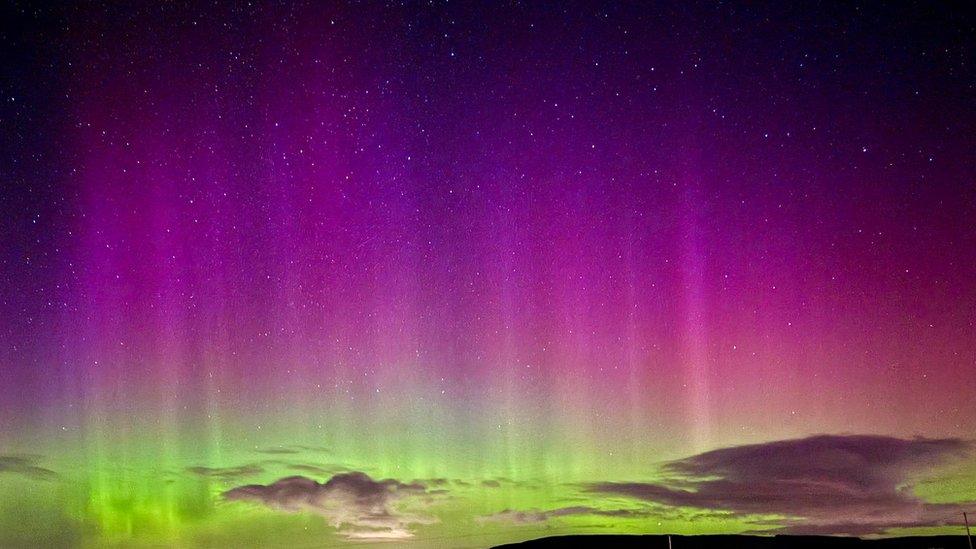Northern lights an 'icing-on-the-cake moment' for photographer
- Published
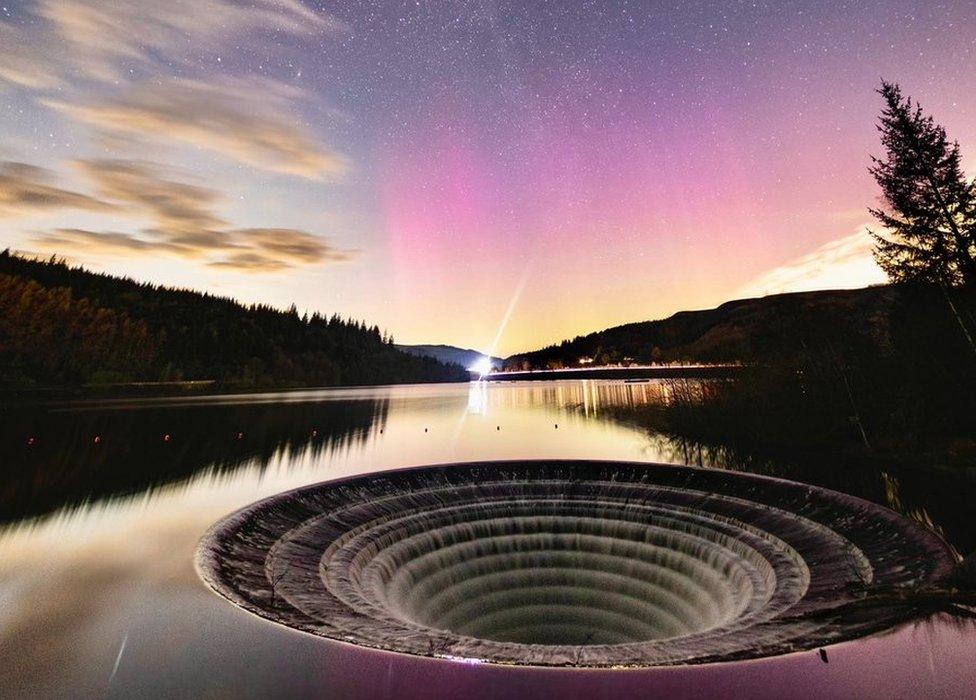
The northern lights were visible over Ladybower Reservoir in Derbyshire
The UK has once again been treated to a stunning display of the northern lights.
While there was an ongoing weak solar storm, the aurora ended up being visible from the Scottish Highlands down to Cornwall on Sunday night.
One photographer was already out, having planned to capture the overflowing shaft spillways - known as "plug holes" - at Ladybower Reservoir in Derbyshire.
Prof Chris Denning then received an alert on his phone while at the site, in what he called an "icing-on-the-cake moment".
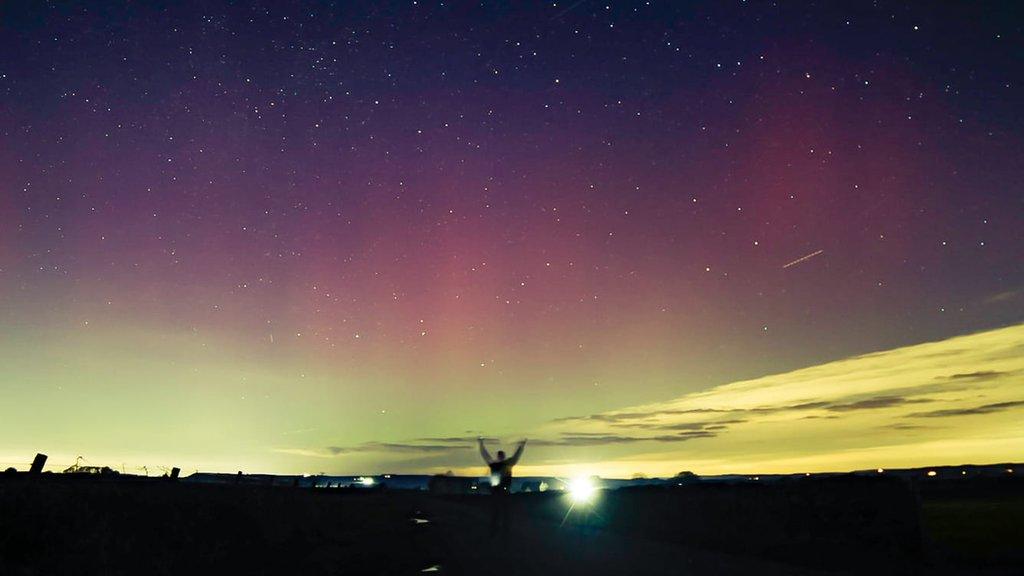
A view from Monyash in the Derbyshire Peak District
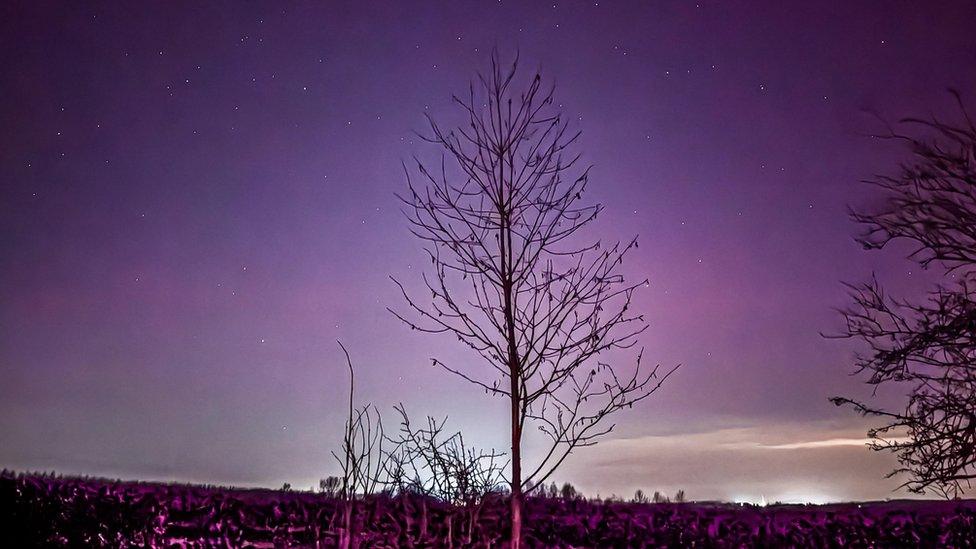
Another sharp snapper captured the northern lights from Overseal in Derbyshire
The University of Nottingham professor said: "I had actually been planning that particular shot for a while because the plug hole, when that's overflowing, is actually really pretty but I wanted to get a picture overnight.
"I needed still water and clear skies and all of that was going absolutely as planned."
It was as he was photographing that the 50-year-old - director of the university's Biodiscovery Institute - got the aurora "red alert".
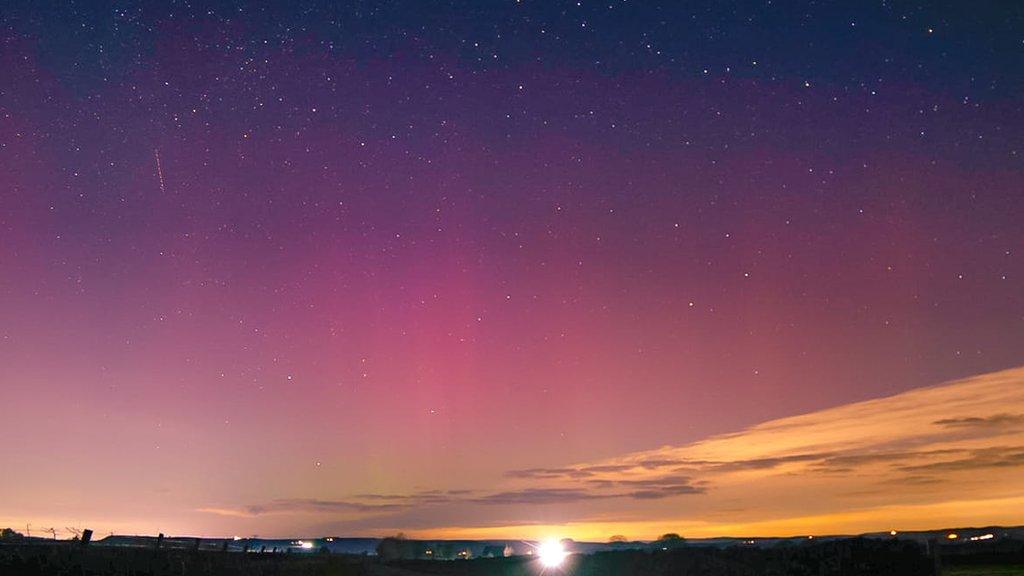
The clear skies meant the stunning display was visible across the East Midlands and beyond
"I thought 'this is unbelievable' and just carried on shooting, and sure enough, the lights came up," Prof Denning said.
According to the Met Office, the northern lights are most active between March and April and later in the year, in September and October.
The best conditions are when the sky is dark and clear, with little light pollution.
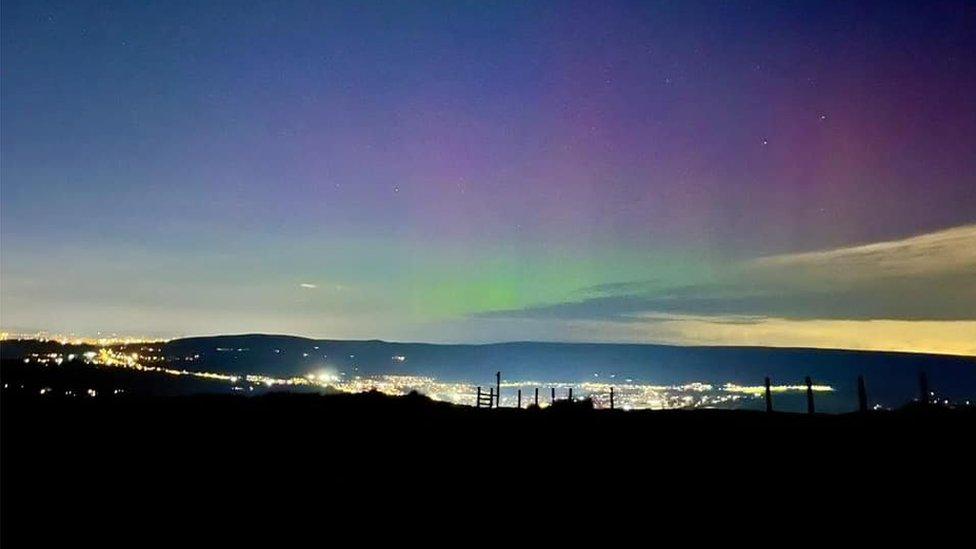
Emma Jane Bramwell also saw the phenomenon in Glossop, Derbyshire

Follow BBC East Midlands on Facebook, external, on X, external, or on Instagram, external. Send your story ideas to eastmidsnews@bbc.co.uk, external or via WhatsApp, external on 0808 100 2210.
Related topics
- Attribution
- Published4 March 2024
